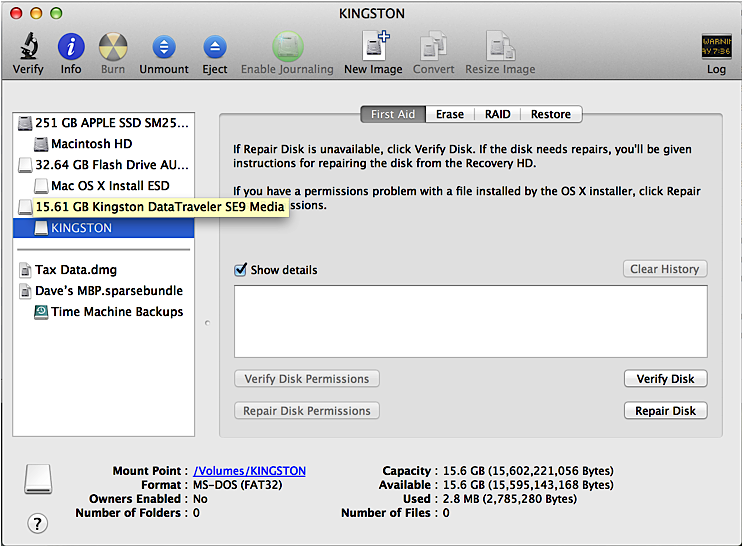

- Format external for windows and mac how to#
- Format external for windows and mac mac os x#
- Format external for windows and mac Pc#
- Format external for windows and mac plus#
Make sure your device can be detected and recognized.
Format external for windows and mac how to#
Read on for step by step instructions… How to Check a USB Drive’s File System?įirst of all, plug your flash drive into the USB port on your computer. How to know what current file system your flash drive is with, and how to format it to exFAT? Now that you’ve learned exFAT is the ideal file system to go. This is because an NTFS-based drive can be read by macOS but you can’t write data to the drive. You may notice that in NTFS is marked “Partially” under the Compatible with macOS column. You should go ahead and format your storage drive with exFAT instead of FAT32, assuming that all devices you want to use the drive support exFAT.

Therefore, it’s perfect for a USB flash drive or external disk, especially when you need to save files more than 4GB in size.

Note that there is another file system called FAT32 that pretty much does the same thing but with one major flaw. In other words, you can access the drive and transfer data without any hassles.
Format external for windows and mac Pc#
If your disk was initially formatted to NTFS on a PC (or HFS+ on a Mac), most likely you’ll suffer limitations, for example, the data on your drive can’t be read or written on one of your computers.įortunately, there is a file system (actually two, I’ll explain) that you can format your flash drive to be fully compatible with Mac and PC. If you have a USB drive, and you plan to use it on both a Mac and PC, things can get a bit tricky here. By default, Macs are with HFS+ (since 2017 there’s new Apple File System, APFS, optimized for flash storage), while PCs are with NTFS. That’s why countless people from around the world have turned to Disk Drill, selecting it as their data recovery tool of choice.It’s no surprise that PCs and Macs do not work well with each other, due to differences between the two operating systems (Windows vs. Without a capable data recovery tool, there’s nothing you can do about it. Realizing that you’ve forgot to back up a critically important file from a newly formatted hard drive feels horrible. After you confirm your selection, it should take just a few moments for the formatting process to finish. Windows will present you with a formatting window where you can specify various formatting parameters. Keep in mind that you can only format storage devices that are currently not in use. Right-click on it and select the Format option from the context menu. If the hard drive you want to format is connected to your PC, it should be there. To format a hard drive for Windows, open the File Explorer and click on This PC. Click on the Erase button again to confirm your decision and wait for the process to end. Select your storage device, choose your desire file system, specify the name, and click on the Erase button. The main window of the utility contains a list of storage devices, storage device details, and formatting options. You can launch it from the App list or use Spotlight. With it, it’s possible to easily format and storage device with just a few clicks.
Format external for windows and mac mac os x#
Mac OS X users have at their disposal a handy tool called Disk Utility. Developed by Microsoft, this modern file system is optimized for situations where the NTFS file system is not a feasible solution, and the file size limit of the standard FAT32 file system is unacceptable. If you need to format external hard drive Mac or Windows, you may also consider the exFAT files system. Because FAT32 supports only up to 4 GB large files, it should be used only with flash drives. Both Mac OS X and Windows also support the FAT32 file system, but we don’t recommend it for hard drives.
Format external for windows and mac plus#
Mac OS X uses the HFS Plus file system, while Windows uses the NTFS file system. First and foremost, you need to decide which file system to use.

Regardless of why you want to format your hard drive, there are some considerations to be made before you begin. Of course, you may also just want to quickly delete the content of an entire hard drive. Data fragmentation remains an issue even in the era of mobile devices, and in some cases formatting is the fastest way how to solve it. Optimization is another good reason for hard drive formatting. When you purchase a brand-new hard drive, there’s no guarantee that it will be pre-formatted from the factory, nor is there any guarantee that it will come with the right file system. Even though most people associate formatting with system installation, there are many other reasons why you might want to format your hard drive. Both Mac OS X and Windows allow users to format their hard drives using built-in utilities.


 0 kommentar(er)
0 kommentar(er)
